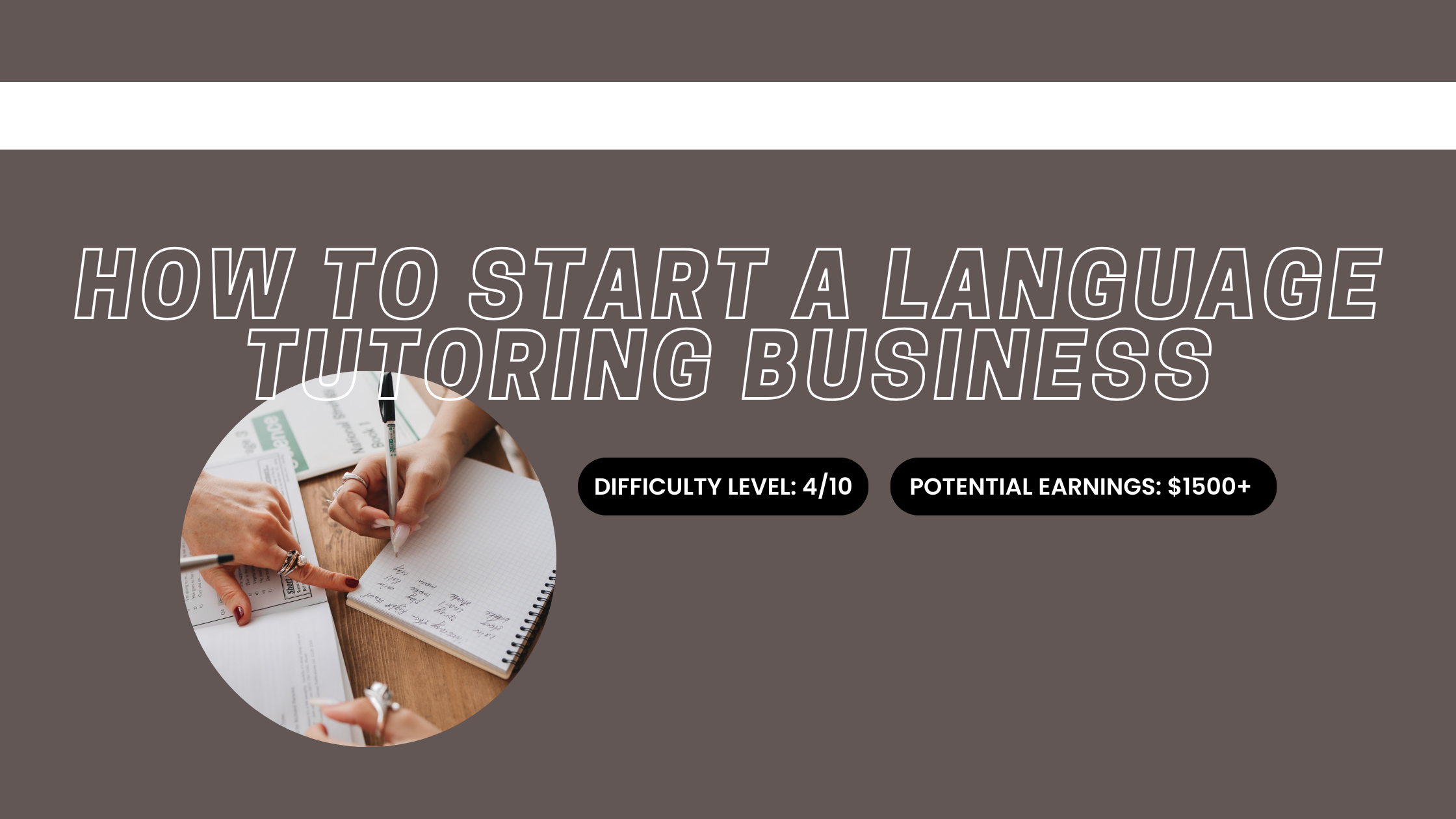How to Start a Language Tutoring Business
Time & Money
Difficulty
4/10
Weekly Time Commitment
10-20 hours (depends on the number of students and frequency of sessions)
Earnings Per Month
$1,500 - $3,000 (depending on rates, number of clients, and lesson frequency)
Is Starting a Language Tutoring Business the Right Gig for Me?
Starting a language tutoring business is perfect for individuals who have a strong command of one or more languages and are passionate about teaching. Whether you want to teach in person or become a language tutor online, this job is for patient, communicative people who like to work with a diverse range of clients. Before you consider how to start a language tutoring business, take an honest look at yourself and consider whether you enjoy helping others learn and grow, or if in reality, you are likely to lose your patience at the first hurdle. One thing is for certain: flexible and excellent interpersonal skills are a must have for this business endeavor.
Preparation: How to Become a Language Tutor
If you're considering how to start a language tutoring business, begin by assessing your language proficiency and teaching ability. Make sure you understand grammar, vocabulary, and cultural context, so that you can give high quality lessons. Get relevant teaching certifications where possible to boost your credibility and attract more clients. Then, narrow in your target audience - beginners, intermediate, or advanced students - and determine the type of language lessons you'll provide - whether conversational, business language, or exam preparation. It helps to establish a tutoring plan, pricing, and learning environment that works for you. If you want to become a language tutor online, make sure you have a suitable office space to work in that will be free of noise and disruptions.
Execution
Choose Your Niche and Services
Select the languages and lessons you will teach. You could study popular languages like Spanish, French, or Mandarin, or less common languages. Decide whether you wish to teach children, adults or professionals wanting to learn languages for work purposes. You could even teach specific languages - preparation for IELTS or TOEFL - accent reduction, or conversational practice. By narrowing your focus you attract clients who are looking for what you have to offer.
Create a Business Plan
Next, you need a business plan to plot out your language tutoring future. Begin by defining your goals, your target audience and services. Establish a pricing structure based on your qualifications, the languages you teach, and the demand in your area or niche. Calculate hourly or daily rates and consider whether you will offer packages for bulk sessions or special rates for long-term students. Also set up a system for handling your finances and client records.
Obtain Necessary Qualifications
Though not necessarily required, teaching certifications can lend you credibility and strengthen your appeal to potential students. For those who teach non-native Speakers, TEFL or TESOL (Teaching English to speakers of Other Languages) certifications may be useful. However, such certifications take time and money upfront, so be prepared to make an investment if you want to take this route.
Set Up a Learning Space
Whatever you choose to teach - whether online or in person - creating an optimal learning environment is important. For in person lessons, prepare a quiet, comfortable and well-lit space. For those who will be teaching virtually: Get an internet connection, audio and video equipment (microphone/webcam) and a clear backdrop. It's worth familiarising yourself with sites like Zoom or Skype, which have screen sharing and interactive whiteboard features to aid with lessons. Prepare some visual aids and learning materials for students to use, in order to enhance their learning.
Market Your Services
Get the word out there to students. Start by creating a website describing your service, qualifications and pricing. Potential students should also be able to find you on social media platforms such as Instagram, Facebook and LinkedIn. Ask satisfied students for testimonials, and post regularly on your site or social media. Delivering a great service will ensure that you receive word-of-mouth referrals, so quality is the most important thing here.
Develop Customized Lesson Plans
A key part of being an effective language tutor is providing lessons that are tailored to the individual needs of each student. Create lesson plans that focus on the student’s goals—whether they’re learning for travel, work, or school. Use a variety of teaching tools, such as flashcards, books, and language apps, to make lessons interactive and fun. Offer exercises that help build vocabulary, grammar, and speaking fluency. Be adaptable in your approach, as different students may have different learning styles, and always provide constructive feedback to help them improve.
Manage Scheduling and Payments Efficiently
A clear scheduling system and payment process helps you stay organized and professional. Utilize scheduling tools so that students can book sessions that fit into both of your calendars. As for payment, use platforms like PayPal or Stripe, or ask for a bank transfer. Establish payment policies upfront (e.g. deposits for cancellations) to avoid confusion later on. A clear structure makes your life easier and builds trust with your clients.
Bumps In The Road
Inconsistent Client Demand
Language tutoring can sometimes have unpredictable demand. One month you might have a full schedule, and the next, you could experience a lull. To avoid the stress of slow months, it’s important to constantly market your services and maintain an online presence. Offering package deals or group lessons can help ensure a steadier income stream, as you’ll have more clients per session.
Diverse Learning Paces
Students may learn at different paces - which is challenging for both you and your clients. Others may learn it quickly, while others take their time and require more patience. Change your lesson plans accordingly. Give extra materials and practice exercises to slower learners so they can work on their skills between lessons. You can complete regular assessments to measure progress and build student confidence.
Technical Issues with Online Lessons
If you decide to teach virtually, you may run into technical difficulties such as poor internet connections, audio issues, or software glitches. To minimize these problems, test your equipment ahead of each session and have backup solutions ready. Keep communication open with students in case of technical difficulties, and be flexible in rescheduling or offering makeup lessons if needed.
Conclusion
If you are still wondering how to become a language tutor, the best advice is to put your best foot forward and get started. This is a pursuit that will require patience, interpersonal skills, and a lot of planning, but the rewards are vast and many people find this to be a fulfilling career path. So start planning those lessons; what are you waiting for?
Continue Learning

Tutoring Business
Start a tutoring business by identifying your expertise, whether in specific subjects or test preparation, and creating a clear pricing model.
